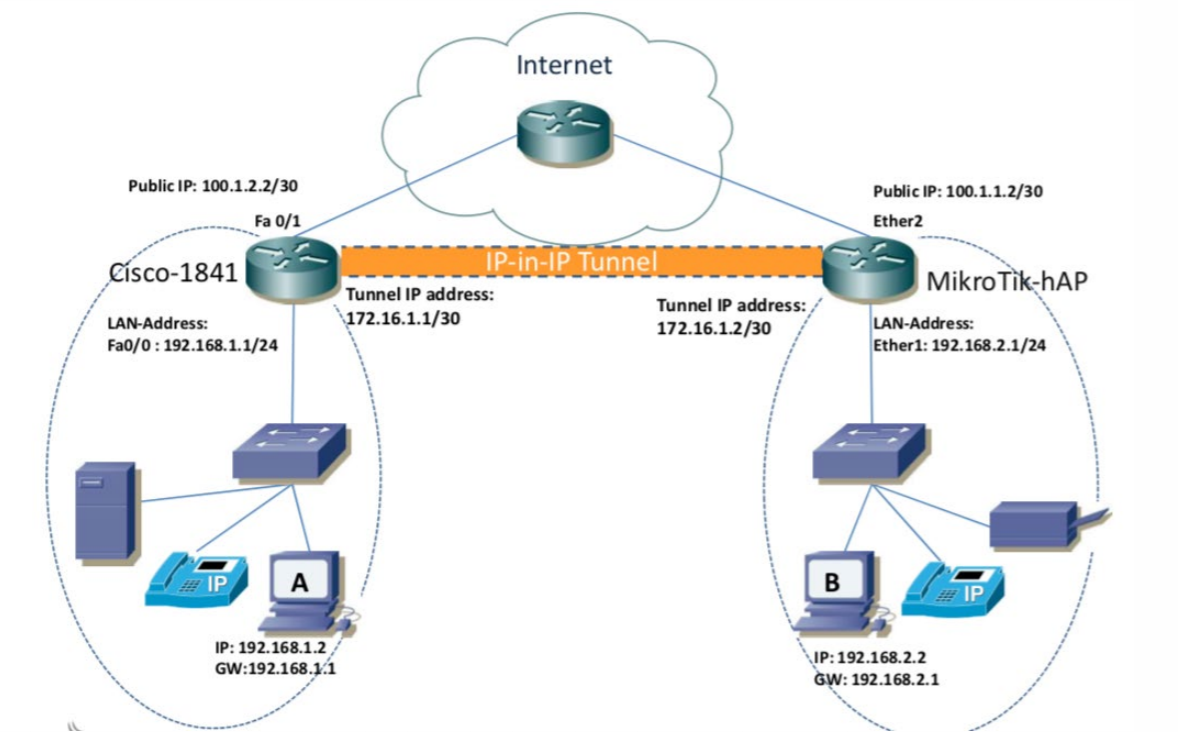Network Layer Protocol
Protocols at Network Layer
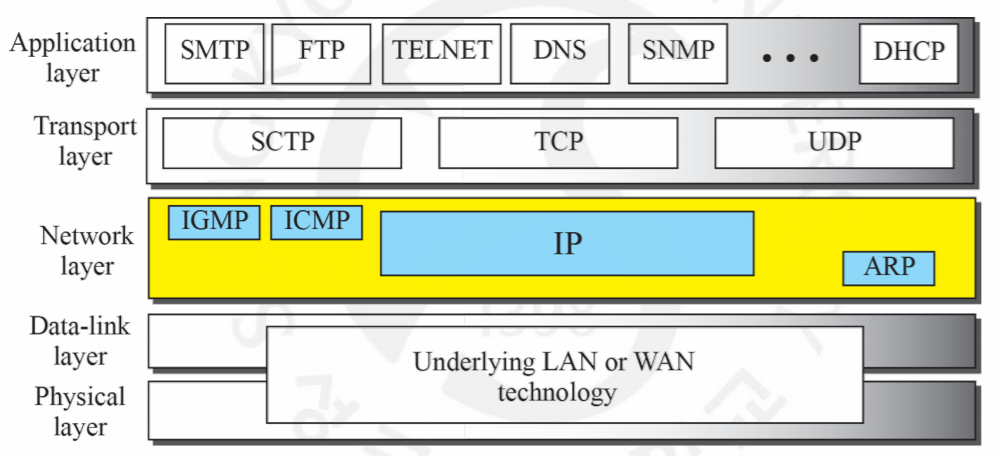
ARP
- Hosts and routers are recognized at the network layer by IP addresses
: An IP address is universally unique - Hosts and routers are recognized at the data-link layer by MAC addresses
: A MAC address is locally unique
| MAC | IP | |
|---|---|---|
| Full form | Media Access Control | Internet Protocol Address |
| Purpose | It identifies the physical address of computer on the Internet | It identifies connection of a computer on the internet |
| Bits | It is 48 bits hexadecimal address. | IPv4 is a 32-bit address, and IPv6 is a 128-bits address |
| Address | MAC address is assigned by the manufacturer of NIC card | IP address is assigned by the network administrator or Internet Service Provider. |
- Internet routers move the packets from the source network to the destination network
: IP address is used to find a path to destination - Packets pass through physical networks to reach hosts and routers
: MAC address is used to move packets between hosts and routers - A routing table outputs a next-hop IP address based on destination's IP address
: Should be able to map an IP address to MAC address
Mapping
- Static
-- Create a table that associate IP address with MAC address
-- Table is stored in each machine
-- MAC address may change
--> Change NIC card
--> A mobile computer roams from network to network
-- Static mapping table needs to be update periodically - Dynamic
-- A machine knows one of the two addresses
-- ARP and RARP
ARP Operation
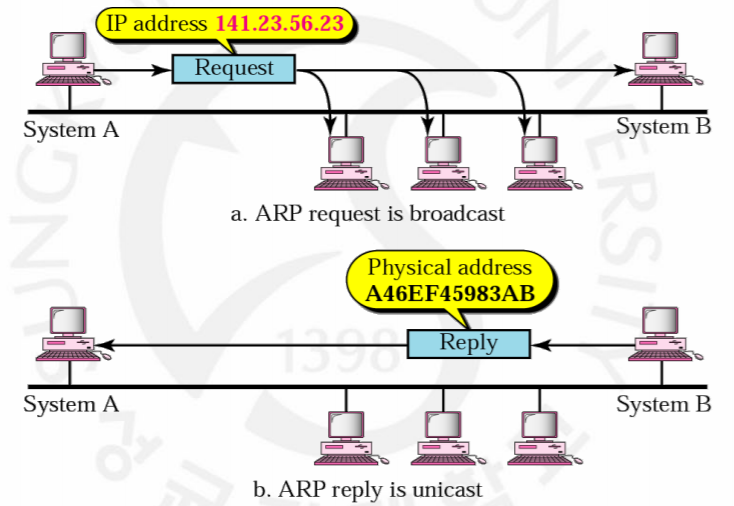
IP(Internet Protocol)
- Host-to host network layer delivery protocol
- Unreliable and connectionless datagram protocol
-- Best-effort delivery service
-- No errol control nor flow control
-- Only error detection (If detected, discard packet) - Pair with a reliable protocol (TCP) for a reliability
IP Datagram
- Packets in IP layer are called datagram
- Variable-length packet with 20 to 60 header size
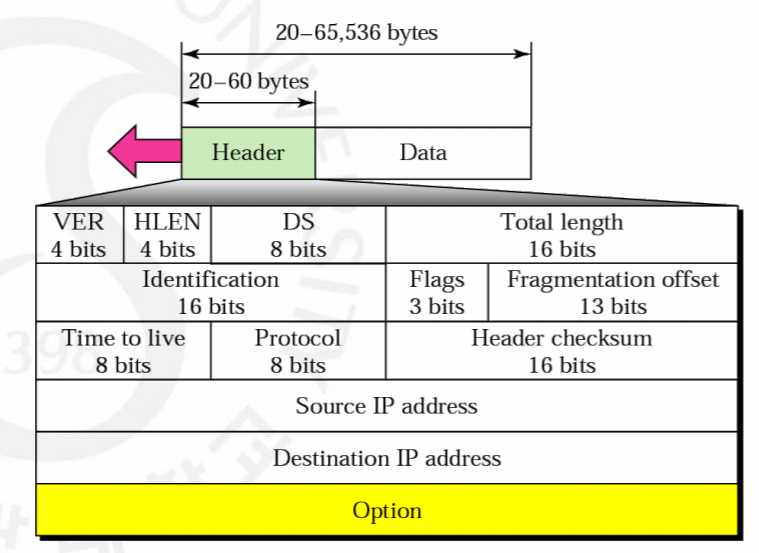
IP Headers
- Header length (HLEN) defines the header length in 4-byte words
- Total length filed defines the total length of the datagram including header
-- The length of IP datagram is limited to 65,555(2^16-1) - Time To Live (TTL) is approximately 2 times the Max. number of routes between two hosts
- Checksum covers only header not data
-- Rely on higher-level protocols
-- Header changes en route not data
Maximum Transfer Unit
- Data link layer (DLL) protocol defines its Max. size of frame that can be transmitted
: Ethernet has 1500 bytes - IP datagram must be less that Max. size
: This size defines Maximum Transfer Unit(MTU) - Originally, IP has 65,536 bytes
: We must divide datagram to pass through the network = Fragmentation
: A datagram can be fragmented by SRC and any routers
: Reassembly is only done because each fragment becomes independent

Fragmentation
- Identification (16bits)
: All fragments have the same identification number
: Help DST to reassemble - Flags (3bits)
: 1st is reserved
: 2nd is DF(Don't Fragment)
: 3rd is MF(More Fragment) - Fragmentation Offset (13bits)
: Relative position with respect to whold datagram
: Measured in units of 8 bytes
Fragmentation Example
- Datagram with 400 bytes
- MTU 1420 bytes
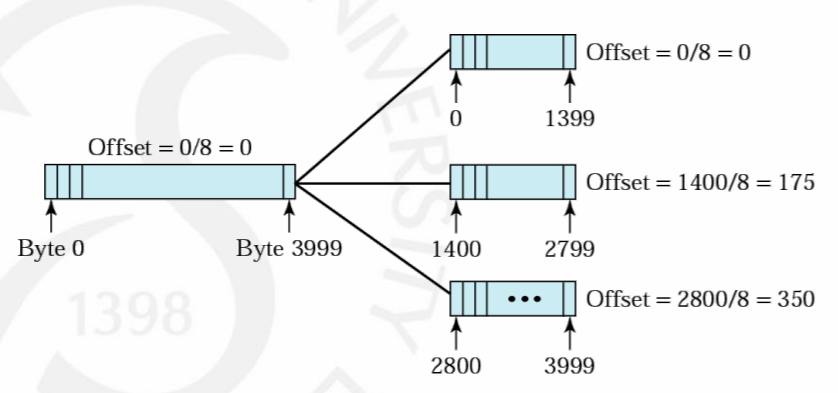
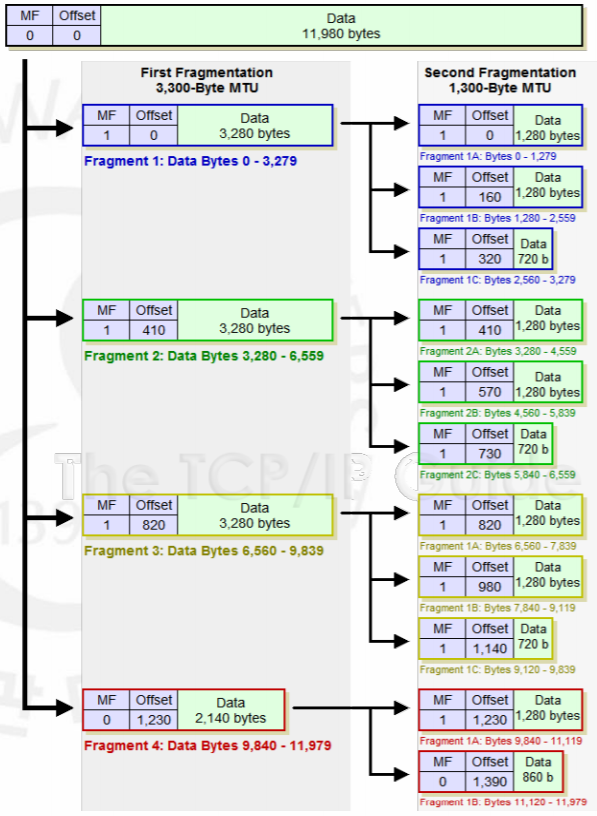
Notes on Fragmentation
- Performance
: Single fragment lost means entire packet useless
: Waste of resources all along the way - Don't Fragment (DF) bit set
: Datagram discarded if need to fragment
: ICMP message generated
-- May spefify MTU
: Used to determine Path MTU (both in TCP, UDP) - Transport and application layer headers do not appear in all fragments.
: Problem if you peep into those headers
Path MTU Discovery (PMTUD)
- The longer the MTU the better for performance, but the worse for reliability
: Lost packet means more data to be retransmitted - IP fragmentation has serious disadvantages
: It's avoided in practice using DF - What does router do if it can't deliver a packet and can't fragment it either
: ICMP sent to SRC
: SRC adjusts the packet size accordingly
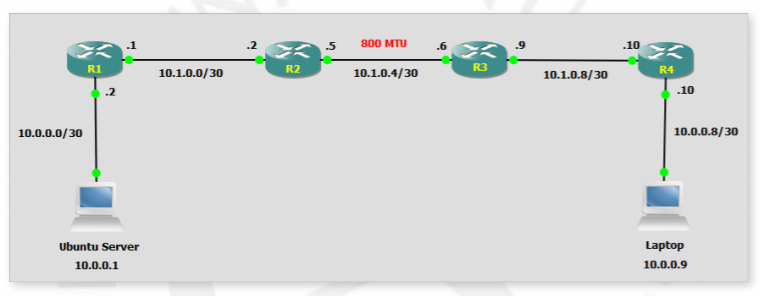

Options
- Headers of IPv4 is made of 2 parts
: Fixed and variable
: Variable part comprises options that can be maximum of 40 bytes to preserve boundary of header - Option is not required
: Can be used for network testing and debugging
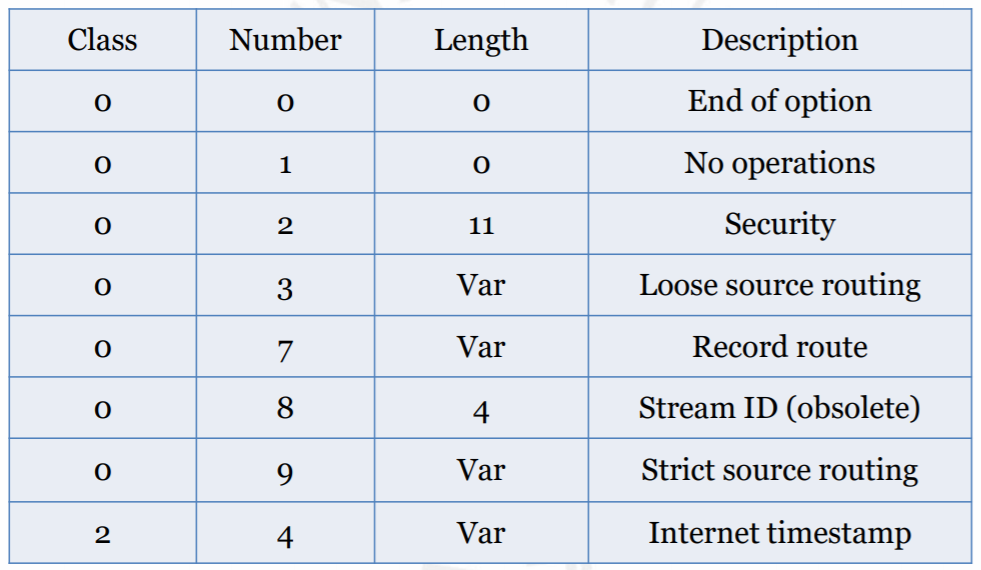
Discussion on IP Header
- If fragmentation is going to be avoided all the time, why not have 4- bytes of fragmentation info as an IP option?
- Is 32-bit address going to be enough?
- Why mess with variable length headers?
: Can the variability in header length be controlled to allow better encoding? - Are the IP options really that useful? Why variable length option headers?
- Many of these issues addressed in IPv6
ICMP (Internet Control Message Protocol)
- No error-reporting or error-correcting mechanism in IP
" What if route must discard a datagram - Lack of mechanism for host and management queries
: For example, determining if a router is alive
Error control
- Not guarantee successful delivery of every datagram
- May be discarded a number of reasons
-- TTL expiration
-- Congestion
-- FCS error
: Not possible to return as SRC address may be damaged - If datagram is discarded by router, router should attempt to return some information to SRC
: SRC may use this information to modify transmission strategy
Flow control
- Router and/or receiving station limit the rate at which they receive data
: Not mandatory and so very limited iin use - Router sends flow control packets to request reducing data flow to other routers and SRC
ICMP Encapsulation
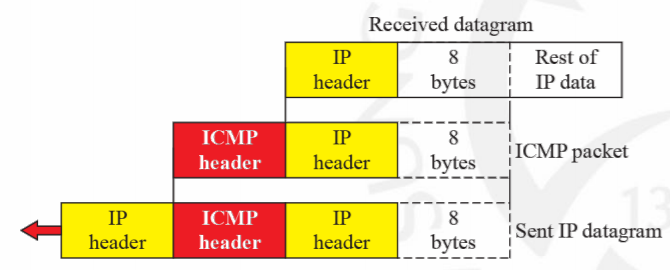
- ICMP is a network layer protocol
: But not passed directly to the data link layer
: Encapsulated inside IP datagrams first
Types of Messages
- Error-reporting messages and query messages
- ICMP always reports error messages to the original source
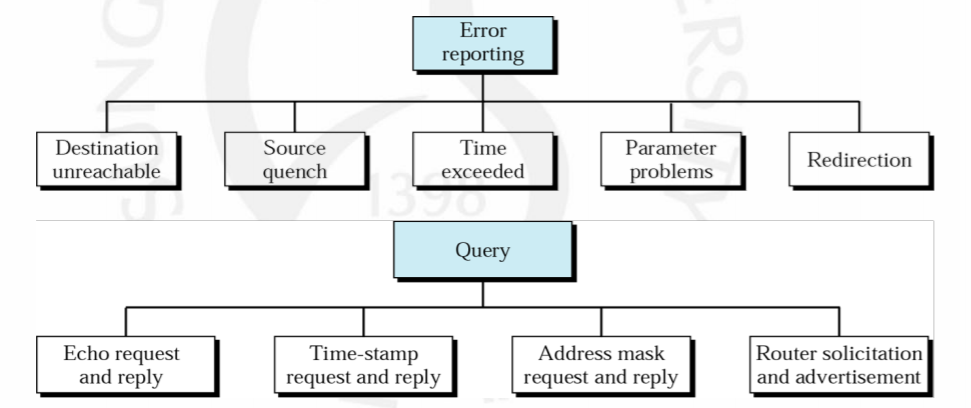
Tunneling
Virtual Private Network
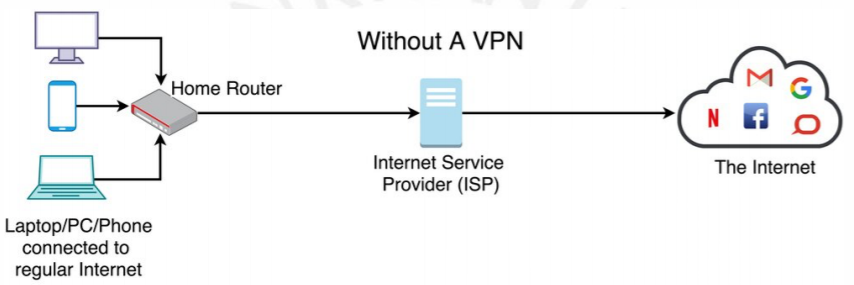

IP-in-IP Tunnel
- Encapsulates IP packets in IP to make a tunnel between two routers

